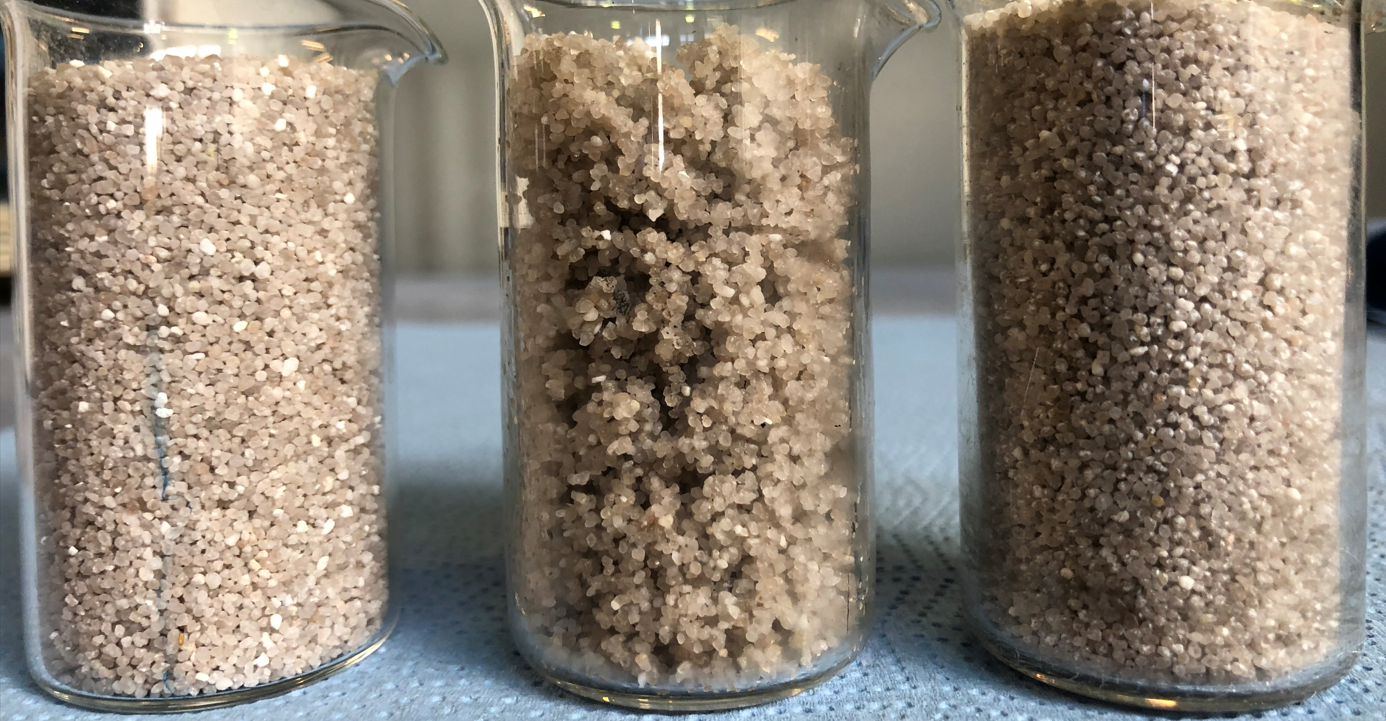Research Summary Report A02
Particle-Bed 3D Printing by Selective Cement Paste Intrusion (SPI) – Particle Surface Functionalisation, Particle Synthesis and Integration of WAAM Reinforcement
[17.06.2022]
Hamilton, Leigh Duncan; Researcher; Leigh-Duncan.Hamilton@tu-braunschweig.de
Zetzener, Harald; Leading researcher; H.Zetzener@tu-braunschweig.de
Kwade, Arno; Project leader; A.Kwade@tu-braunschweig.de
TU Braunschweig, Institute for Particle Technology
Our research mission for A02 is the implementation of Wire and Arc Additive Manufacturing (WAAM) as a means of simultaneously printing the reinforcement during the particle bed concrete 3D-printing method selective paste intrusion (SPI).
The combination of SPI and WAAM is accompanied by obstacles that must be overcome in order to ensure collaborated functionality. One major challenge occurs from the propagated thermal load of WAAM (approx. 1600 °C), which has negative effects on the paste rheology and resulting concrete strength. Additionally, the particle bed structure and density has to be optimised to obtain both, high strength of the building component and reduced consumption of cement. Therefore, the overall goals are to tailor particle and bulk flow properties and to minimise heat propagation into the particle bed [1].
Summary
While our project partners from TU Munich are investigating process parameters for SPI and WAAM as well as active cooling strategies to reduce heat transfer into the particle bed, we at the Institute for Particle Technology are, inter alia, responsible for specially devised materials to promote passive cooling and optimise the particle bed structure for the combined process of SPI and WAAM. Passive cooling can incidentally be achieved by incorporating water into the particle bed consisting of coarse quartz. Furthermore, additional water also compensates for water loss within the cement slurry due to the remaining thermal load.
Water does however have negative effects on bulk properties with respect to the requirements of SPI. Increasing the humidity or rather the water content within bulk materials results in capillary liquid bridges (see Figure 1), thereby promoting inter-particle forces. Hence, the flowability of the sand is decreased, leading to irregular porous structures within the bulk material which successively affects processability in SPI (e.g. particle layer distribution and penetration behaviour of the cement paste) and even the component strength.
Consequently, a method to integrate water into the particle bed without severe negative effects on bulk material properties had to be devised. One viable opportunity arose with dry water as an additive, which is capable of storing up to 98 wt.% of water. Dry water is classed as an air-water emulsion, consisting of fine water droplets surrounded by a protective silica shell. The protective silica coating prevents water droplets from merging and gives dry water its seemingly powdery appearance. After creating dry water via high shear processes, it can be used to coat coarse sand particle surfaces, and thus, produce quasi-dry bulk materials with sufficient bulk properties for SPI.
Current state of research
Mixtures of sand and dry water generated promising results with respect to the bulk density as well as further dynamic flow angle measurements. The initial product properties can almost be completely maintained for water contents that would otherwise have not been suitable for SPI. This is mainly due to silica counteracting the water’s natural force of coalescence. An example of the different effects is portrayed in Figure 2, where three samples were each poured into a glass. The left glass contains dry sand and is the initial and desired state. The centre glass is filled with a mixture of sand and water, demonstrating the undesired state with a larger and an uneven void volume distribution. Last but not least, the right glass, a mixture of sand and dry water, strongly resembles the left glass. Notably, the right glass has the same amount of water as the centre glass.
Including all project partners, current research should soon verify the full suitability of dry water as an additive for bulk materials used in the united process of SPI and WAAM. Experiments include comprehensive studies by means of compressive strength as well as pull-out experiments.

Figure 1: Micro-CT imaging of coarse sand particles (grey) with liquid bridges (blue). Credit: L.D. Hamilton, iPAT, TU Braunschweig

Figure 2: A comparison of dry sand (left); a mixture containing sand and water (middle); and a mixture containing sand and dry water (right)
Sequential images taken from a rotating cylinder with: a) Normal dry sand, b) A mixture of sand and water, c) A mixture of sand and dry water. Furthermore, b) and c) contain the same amount of water within the mixture and the rotating cylinder demonstrates the flow behavior of bulk materials.






